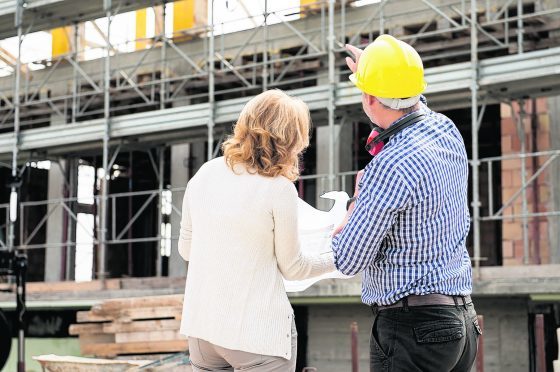Are you tired of not understanding what your builder means with their ‘builder banter’ and technical terms?
Whether you’re visiting a show home or discussing plans with a builder it helps to know the lingo which is why the NHBC has created this helpful guide:
CHIPPY: Not the local fish and chip shop, but a slang term used for anyone who works with wood, such as a joiner or a carpenter.
CLOSER: A brick that has been cut in half lengthways.
COURSE: AKA as a ‘course of bricks’ a single horizontal row of bricks.
DOT AND DAB: A term used for dry lining (gluing plaster boards to masonry walls).
FIRST FIX: If your builder talks about the first fix, they mean everything undertaken before plastering walls and ceiling, such as installation of wires, pipes etc.
FLASHING: A metal sheet that waterproofs junctions, such as between a wall and a roof.
GABLE: This translates into the triangular upper part of a wall that supports a pitched roof.
HERRINGBONE: It’s that zigzag pattern of brickwork that is popular for driveways and patios.
JAMB: Proper word for the side of an opening in a wall that is for a door or a window
JOIST: The right terminology to describe a beam (a long, sturdy piece of squared timber or metal) supporting a floor or ceiling.
MAKE GOOD: Simply means to repair the plaster and paintwork after some form of interior construction work.
MUCK: Slang term used for sand and cement mortar.
PARTY WALL: A wall that separates properties, such as in terraced houses.
PURLIN: A horizontal timber or steel beam halfway up a roof that gives extra support.
REVEAL: Refers to the vertical side of a window or door.
SCREED: Is the correct term to describe a layer of sand/cement that provides a smooth finish to the floor.
SECOND FIX: All the jobs completed after plastering is finished.
SKIM: The last coat of plaster.
SPARKY: Term to describe an electrician.
STACK: Means the vertical waste pipe from sinks and toilets.
TRV: Otherwise known as the thermostatic radiator valve.
NHBC head of house building standards Mark Jones said: “Communication between a homeowner and a builder is extremely important, if people cannot understand what is being discussed, the possibility of making mistakes increases and can affect the progress of a project.
“Our team of technical experts regularly receive queries from homeowners trying to decipher builder jargon. This list defines some of the terms used in new home construction, repair and maintenance, providing a quick reference for homeowners.”
